15 Best Aero Helmets for Triathlon and Time Trial
This site contains affiliate links. I may earn a small commission, at no extra cost to you.
Let me guess.
You either just bought a tri bike and now need to upgrade your helmet as well. (because a super fast bike with a beginner helmet just looks ridiculous).
Or you think you’ll just buy the helmet for aero gains on your road bike (but to be completely honest, the upgrade to a tri bike won’t take long either).
And you’re right because aero helmets are engineered to reduce wind resistance, potentially saving precious seconds or even minutes throughout a race.
With numerous options on the market, selecting the best aero helmet can be tricky….but this is what I’m here for!
This review highlights the best aero helmets for triathlon, considering factors like aerodynamics, comfort, weight, safety features, and ventilation.
Let’s dive in!
What Are the Best Aero Helmets for Triathlon?
Finding the best helmet on the market is not an easy quest.
But luckily for you, here are all the best ones compiled into one list. Each with a short description of the product, its key benefits, and some pros and cons.
I hope you find the right one for you:)
1. Giro Aerohead MIPS Triathlon Helmet

This helmet from Giro is designed to maximize aerodynamics while maintaining ventilation for comfort during long triathlon races. Its great performance has been proven at the Tour de France and Ironman World Championship!
Key Benefits
- MIPS system for added safety.
- Wind tunnel tested aerodynamics.
- Lightweight construction for reduced fatigue.
Pros & Cons
Pros:
- Excellent aerodynamics
- Large visual field
- Magnetic lens anchor attachment
Cons:
- Relatively expensive.
2. Rudy Project The Wing Aero Helmet

With its sleek design and wind-tunnel-tested aerodynamics, The Wing ensures you slice through the air like a champion. The integrated visor offers seamless aerodynamics and UV protection, while the 360-degree fit system ensures a snug and comfortable fit for every head shape.
Key Benefits
- Sleek aerodynamic design for maximum speed.
- Visor with UVA and UVB protection.
- Removable magnetic visor.
Pros & Cons
Pros:
- Superior aerodynamics
- Integrated visor
- Customizable fit
Cons:
- Some users may find it slightly heavy compared to other options.
3. Specialized S-Works TT Helmet
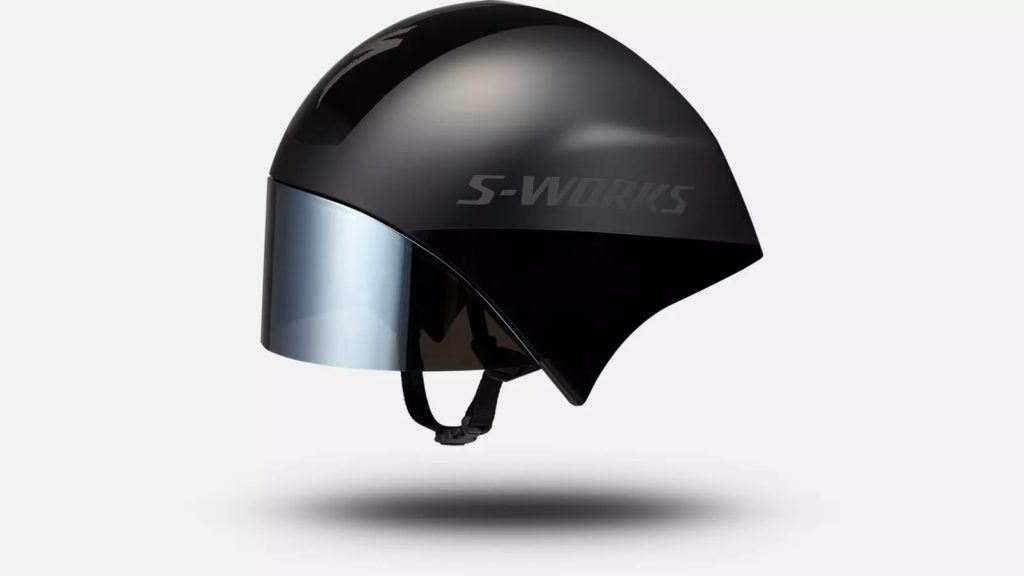
Specialized S-Works TT Helmet is engineered for maximum speed and airflow optimization, making it a top choice for serious triathletes.
Key Benefits
- MIPS Node Air technology.
- High-grade (EN166) anti-fog coating.
- Tri-Fix web splitter for improved comfort and ease of adjustment.
Pros & Cons
Pros:
- Sleek design
- Lightweight
- Comfortable fit
Cons:
- Expensive
- Limited color options
4. Lazer Volante Kineticore Aero Helmet

The integrated KinetiCore technology offers next-level protection from rotational impact, giving you peace of mind as you push your limits. Plus, the integrated smoked panoramic lens provides a full field of view while reducing drag and ensuring crystal-clear vision. Engineered for speed and precision, the Volante KinetiCore is your ultimate companion for race day domination.
Key Benefits
- Computer-designed and wind tunnel tested for optimal aerodynamic performance.
- Integrated KinetiCore technology for additional rotational impact protection.
- Lightweight construction for reduced fatigue during long rides.
Pros & Cons
Pros:
- Aerodynamic performance
- Smoked panoramic lens
- Advanced TurnSys dial for optimal fit
Cons:
- More expensive than other options.
5. Louis Garneau P-09 Helmet
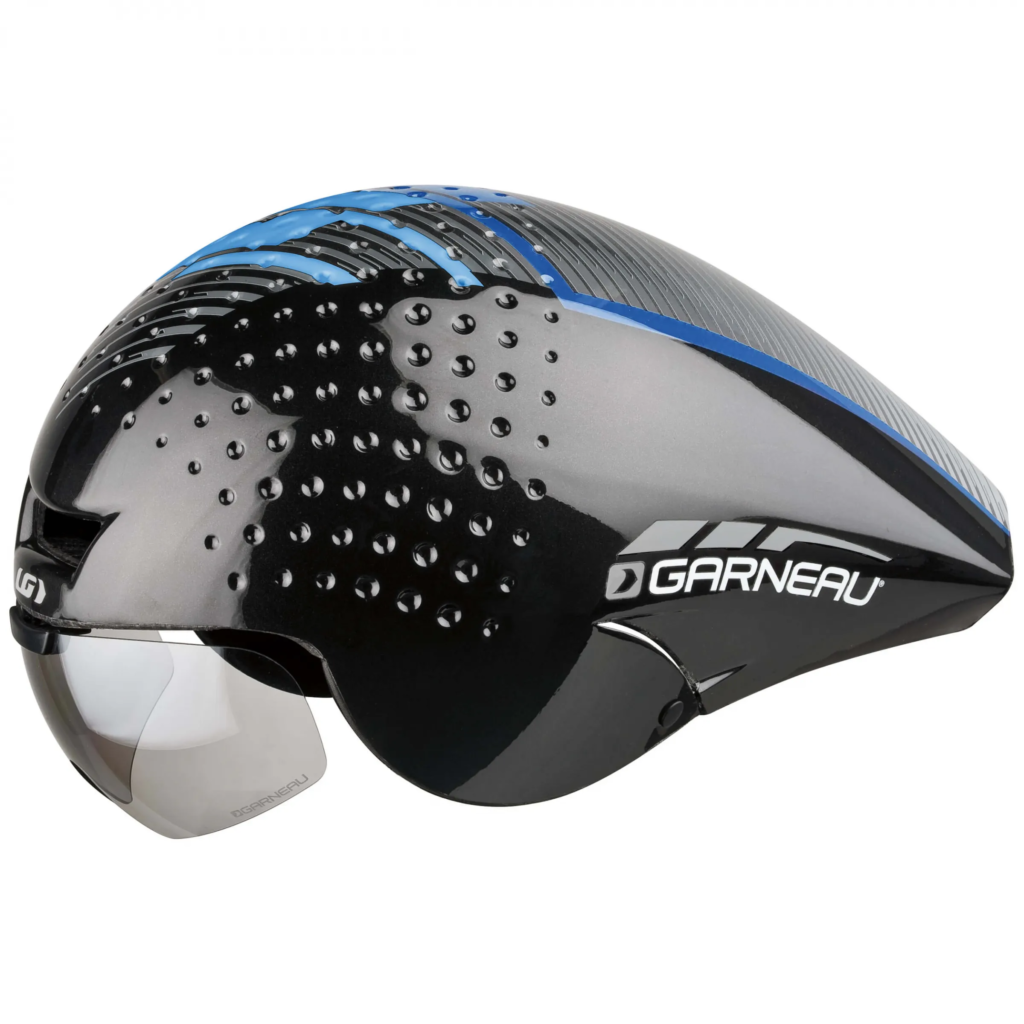
The Louis Garneau P-09 Helmet is engineered to reduce drag and optimize airflow, making it an ideal choice for triathletes seeking peak performance.
Key Benefits
- 4 vents for improved ventilation.
- Spiderlock 4D adjustment system for a precise fit.
- Icefil padding for enhanced cooling and comfort.
Pros & Cons
Pros:
- Aerodynamic design
- Precise fit adjustment
- Comfortable padding
Cons:
- The design of the helmet may not appeal to everyone.
6. Kask Bambino Pro Evo Tri Helmet
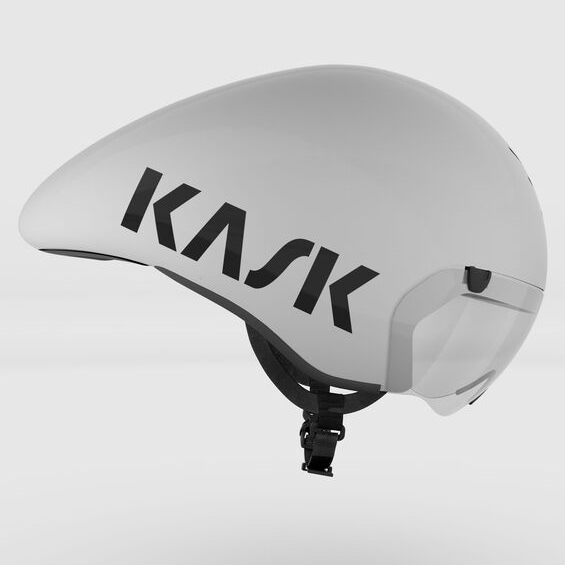
Kask Bambino Pro Evo Tri Helmet offers advanced aerodynamics and comfort features to optimize performance during triathlons.
Key Benefits
- 3D Dry Padding.
- Magnetic visor attachment for easy on-off.
- Tested in the wind tunnel.
Pros & Cons
Pros:
- Excellent aerodynamics
- Comfortable fit
- Magnetic visor
Cons:
- Visor may fog up in humid conditions.
7. Bell Javelin Aero Helmet

The Bell Javelin Aero Helmet is engineered for speed and comfort, making it a popular choice among triathletes looking to optimize their performance.
Key Benefits
- Streamlined aerodynamic profile for reduced drag.
- Twin Axis Gear (TAG) fit system for easy adjustment on the fly.
- SeamFlex ear flaps for easy and quick removal of the helmet.
Pros & Cons
Pros:
- Aerodynamic design
- Easy fit adjustment
- Efficient ventilation
Cons:
- Some users find the ear flaps uncomfortable.
8. POC Tempor Helmet
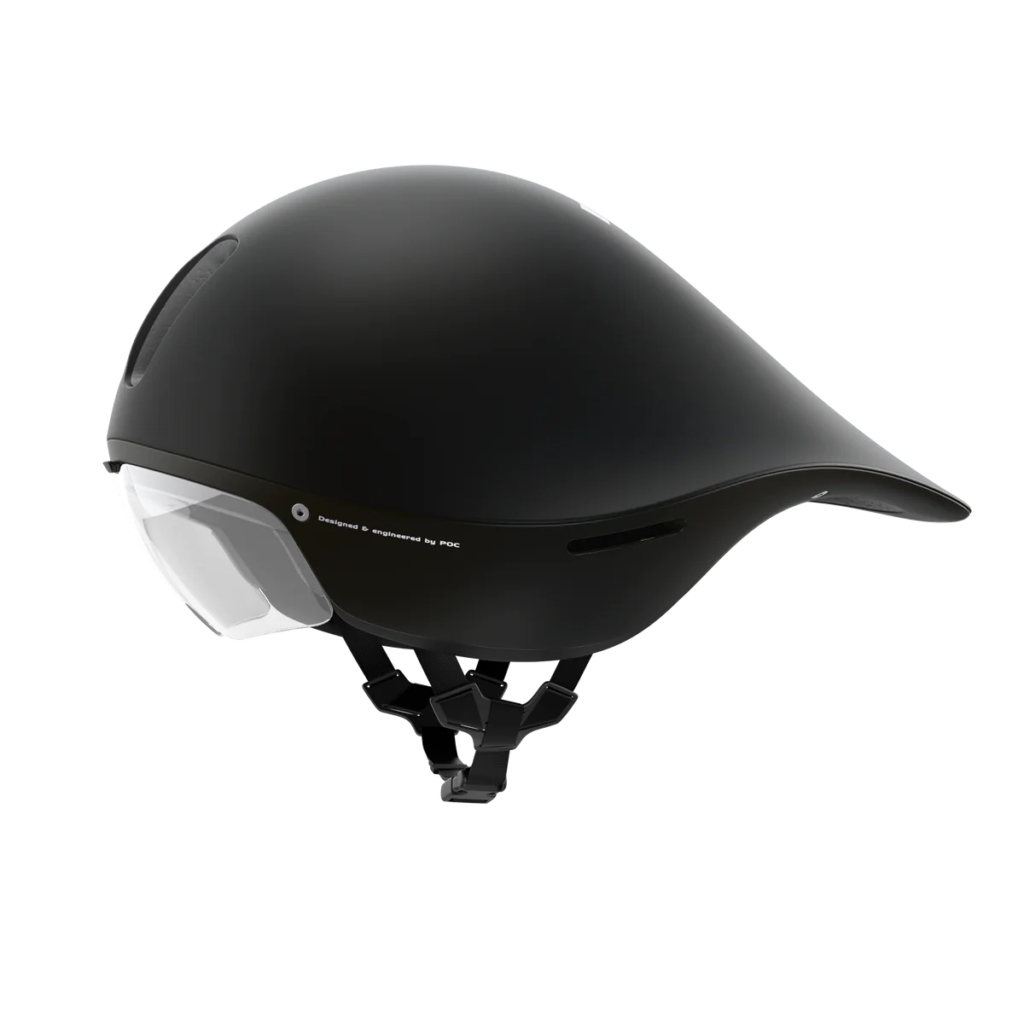
POC Tempor Helmet is designed to minimize drag and maximize ventilation, making it an excellent choice for triathletes competing in hot conditions.
Key Benefits
- Aerodynamic design with rear dents to reduce turbulence.
- Developed for ultimate speed using CFD.
- Channeled air ventilation through the helmet.
Pros & Cons
Pros:
- Aerodynamic design
- Excellent ventilation
- Detachable visor
Cons:
- I think the design takes some getting used to.
9. Giro Vanquish Mips Helmet

Its innovative TransformAir design actively streamlines airflow, reducing drag and enhancing your performance on the road. With an EPS liner featuring progressive layering and integrated MIPS technology, this helmet offers both comfort and protection.
Key Benefits
- TransformAir technology for streamlined airflow.
- Magnetic VIVID™ shield by ZEISS® for clear vision.
- Roc Loc® 5 Air MIPS® fit system for a customized fit.
- Lightweight construction with progressive layering for enhanced safety.
Pros & Cons
Pros:
- Aerodynamic design
- Magnetic shield
- Good ventilation
Cons:
- Some users may find the docking system of the shield difficult.
10. Scott Cadence PLUS Helmet
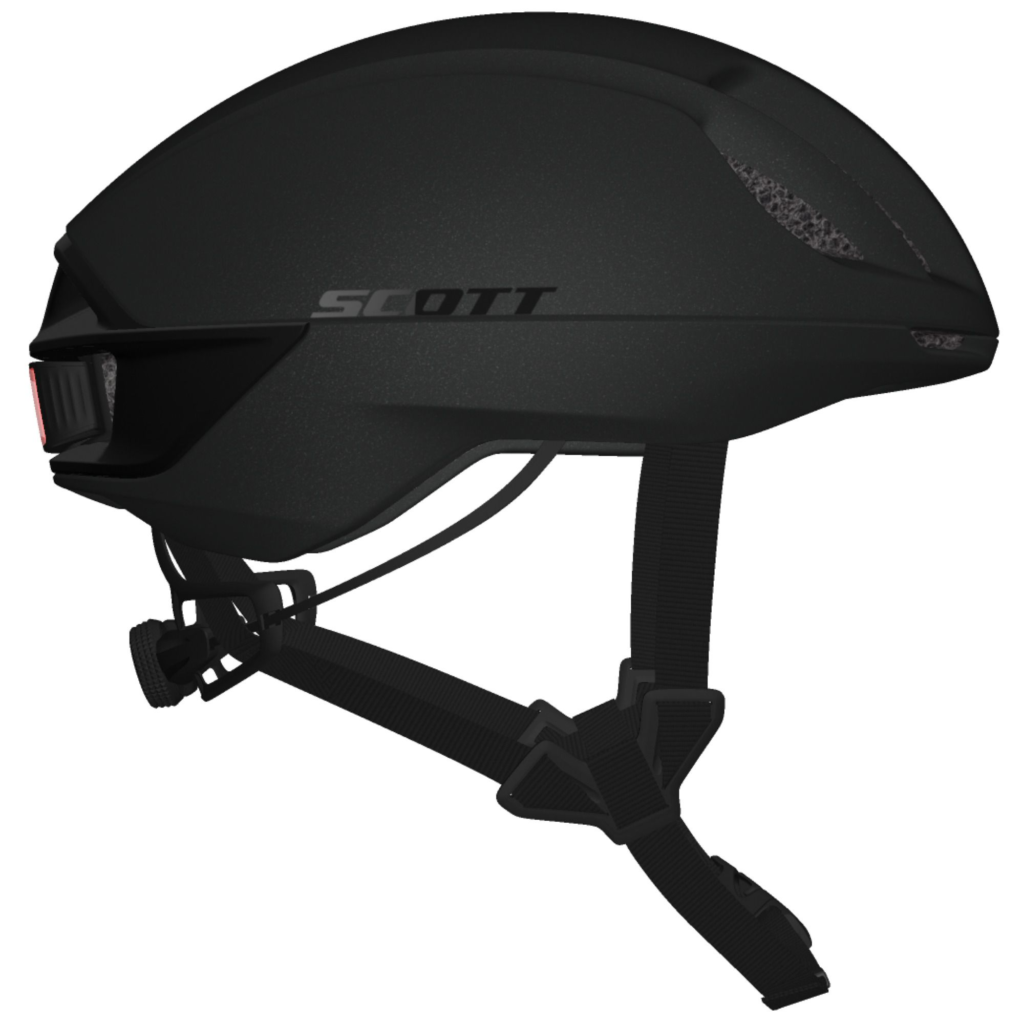
Scott Cadence PLUS Helmet offers a perfect blend of aerodynamics, ventilation, and comfort for triathletes aiming for top performance.
Key Benefits
- Optimized aerodynamics through extensive wind tunnel testing.
- MIPS Brain Protection System for added safety.
- Rear clip-on light.
Pros & Cons
Pros:
- Aerodynamic design
- MIPS technology
- Comfortable padding
Cons:
- Maybe not aero enough for some people.
11. Oakley ARO5 Helmet
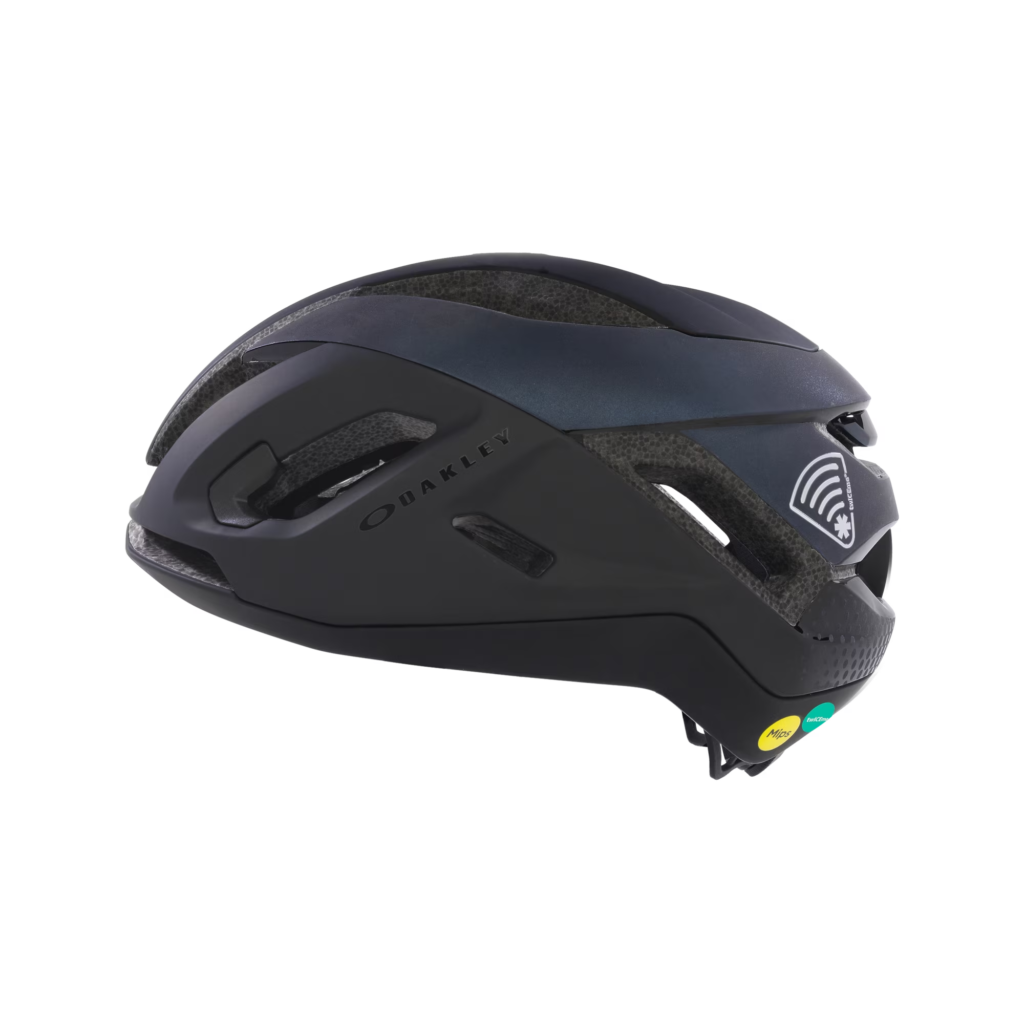
The Oakley ARO5 is less aero than the previous models but it perfectly combines aerodynamics and ventilation to keep you fast and cool throughout your triathlon.
Key Benefits
- BOA FS1-1 System for precise fit adjustment.
- MIPS Brain Protection System for added safety.
- Eyewear dock to securely store sunglasses.
Pros & Cons
Pros:
- Very good airflow and breathability
- Lightweight
Cons:
- Sits lower on the head and some users could find the fit slightly narrow
12. Mavic Comete Ultimate Helmet

The Mavic Comete Ultimate is designed to excel in aerodynamics and ventilation, providing triathletes with a competitive edge.
Key Benefits
- Superlight construction for minimal weight.
- Clima Flow ventilation system for efficient cooling.
- Ergonomic padding for enhanced comfort and moisture management.
Pros & Cons
Pros:
- Lightweight
- Excellent ventilation
- Ponytail compatibility (ideal for us women)
Cons:
- Limited adjustability may not fit all head shapes.
13. Trek Ballista MIPS Aero Helmet
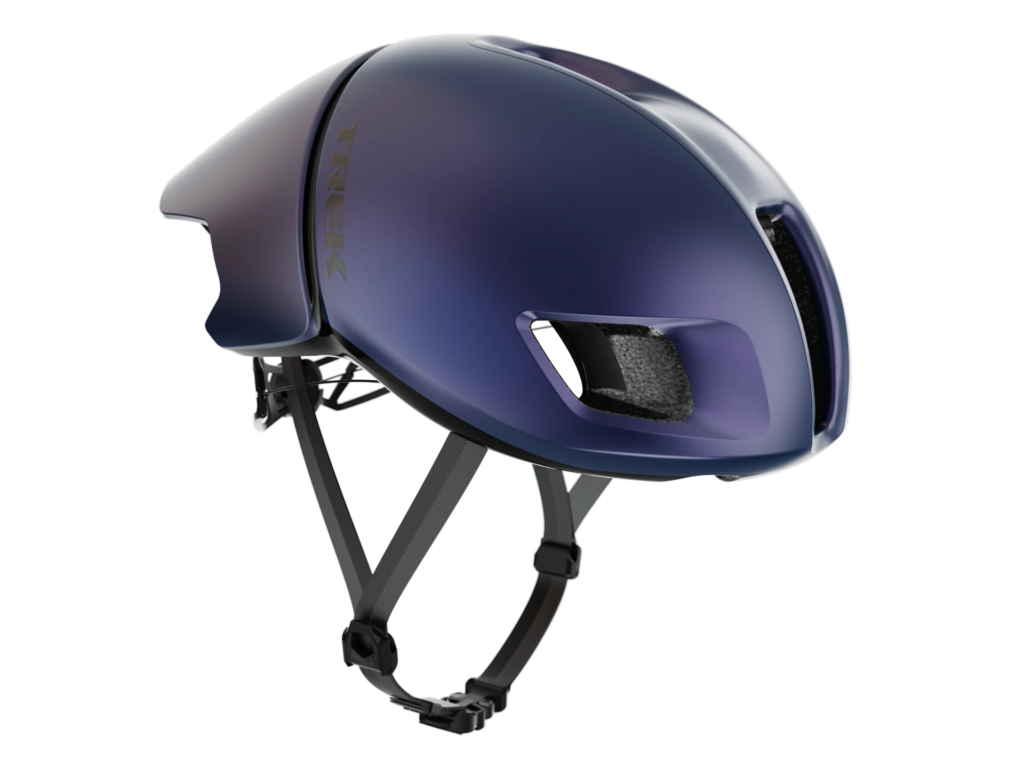
The Trek Ballista MIPS combines aerodynamics, ventilation, and safety features to deliver high performance in triathlon races.
Key Benefits
- Aero-optimized design for reduced drag.
- MIPS technology for added protection against rotational forces.
- Really good return policy!
Pros & Cons
Pros:
- Aerodynamic design
- Very lightweight
Cons:
- The purple color could look a little bit different in real life than in the pictures.
14. Catlike Mixino Aero Shell Helmet
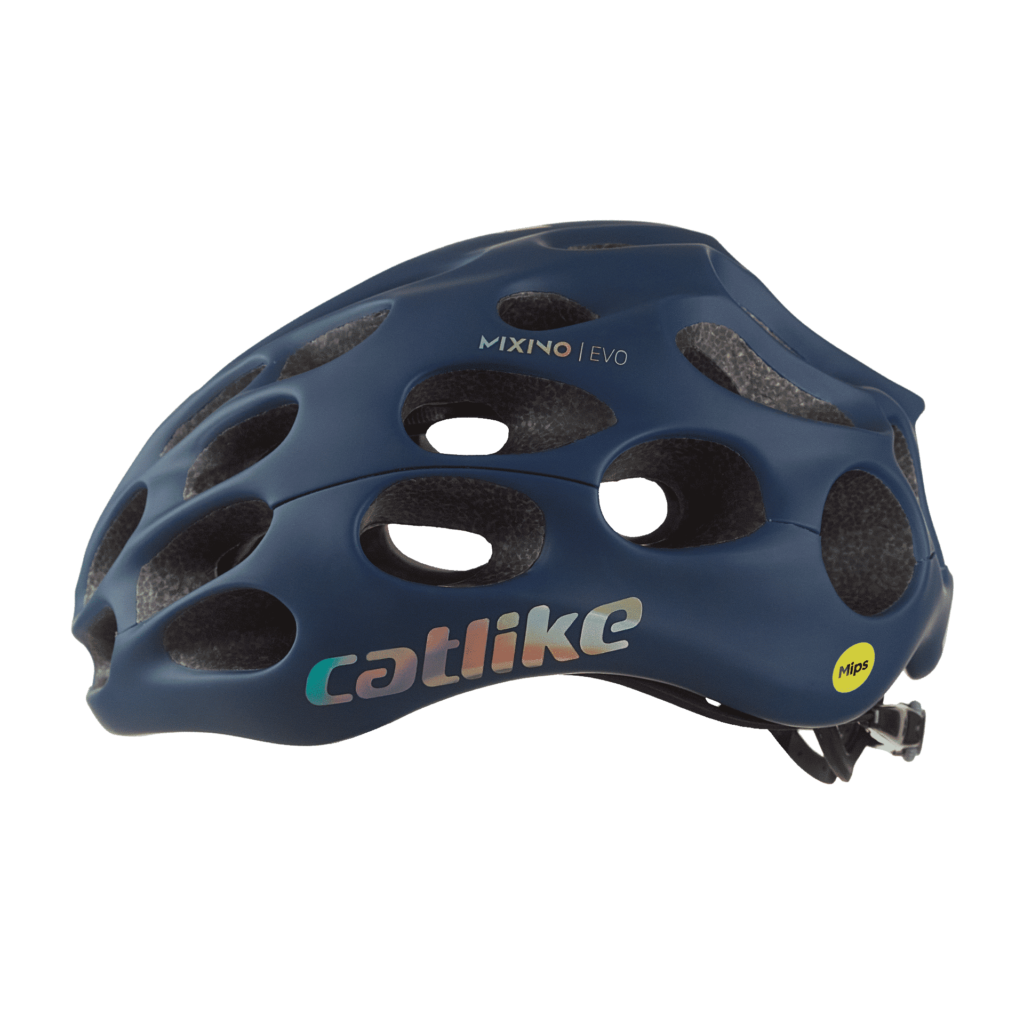
Catlike Mixino Aero Shell Helmet offers advanced aerodynamics and ventilation to enhance triathlon performance in various conditions.
Key Benefits
- A total of 18 air inlets and 20 air outlets for maximum ventilation.
- A divider that keeps the retention straps away from the ears.
- MPS Evo retention system for customizable fit adjustment.
Pros & Cons
Pros:
- Excellent ventilation
- Customizable fit
Cons:
- Increased ventilation could lead to aerodynamic losses.
15. Kask Utopia Aero Helmet
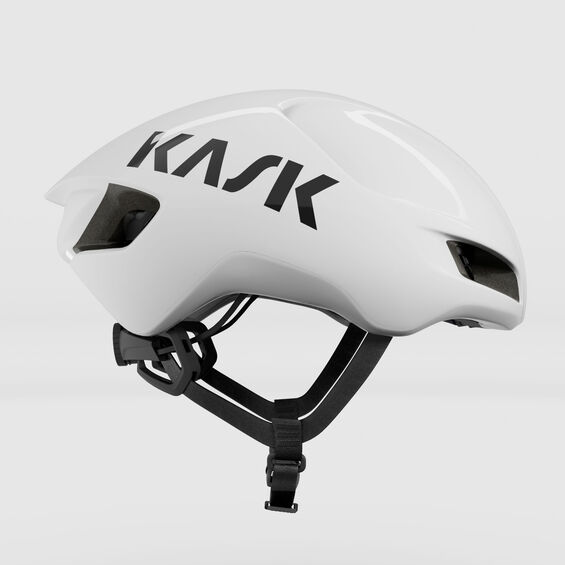
Kask Utopia Aero Helmet offers exceptional aerodynamics and ventilation, making it a top choice for triathletes seeking peak performance. (This is the one I have now and I absolutely love it, it felt like I got back some watts immediately!)
Key Benefits
- Wind tunnel tested aerodynamics for maximum speed.
- Octo Fit adjustment system for a precise and comfortable fit.
- Designed for maximal airflow and thermal regulation.
Pros & Cons
Pros:
- Aerodynamic design
- Precise fit adjustment
- Eexcellent ventilation
Cons:
- Relatively expensive compared to other options.
Why Aero Helmets Matter in Triathlon
In triathlon, where every second can count towards achieving a personal best or winning a podium place, the marginal gains offered by aero helmets can be significant.
Over the bike leg of a triathlon, which can be anywhere from 20 km in a sprint distance to 180 km in a full Ironman, the cumulative time savings from reduced drag can be substantial.
Many studies provide proof of this. Standard helmets impose a higher drag in comparison to an aero road helmet.
Aero helmets also contribute to energy savings, allowing athletes to conserve energy for the running leg of the race.
Aero Road Helmet VS Standard Helmet VS Time Trial Helmet
The main difference between an aero bike helmet and a normal cycling helmet lies in the design focus:
- Aero Road Helmets: Designed primarily for speed, they feature a smoother surface and fewer vents, to minimize air resistance. They are ideal for races and time trials where aerodynamics is a priority over long-distance comfort. This is the middle ground between a standard road cycling helmet and a TT and triathlon helmet.
- Standard Road Helmets: These prioritize ventilation and comfort, featuring more vents and a design that promotes airflow over and around the head to keep riders cool over longer distances. While they are more versatile, they are not as aerodynamically efficient as aero-road helmets.
- Time Trial Helmets: Characterized by their distinctive shapes, often featuring a long tail to smooth airflow across the helmet and down the back of the rider, they’re engineered to minimize drag in a straight-line position. Strategic vent placements, internal channeling, and advanced materials work together to keep the rider cool while maintaining aerodynamic advantages. But these helmets are less about comfort and more about performance, specifically tailored for time trials and triathlon bike legs where every second counts.
In any case, wearing a helmet is a must, at least at competitions, so you can decide if you want to wear an aero cycling helmet or just go with a regular one.
How an Aero Helmet Can Benefit You
- Time Savings: The most direct benefit is the potential reduction in time against the clock, which can be crucial in competitive settings.
- Energy Efficiency: By cutting through the air more effectively, you expend less energy battling wind resistance, potentially leaving more watts in reserve for later stages of the race.
- Safety and Comfort: Modern aero helmets also incorporate advanced safety features like MIPS (Multi-directional Impact Protection System), along with design considerations for fit and comfort, making them a smart choice for both performance and protection.
Buyers Guide: How We Conducted Our Research
When researching the best aero helmets for triathlon, we focused on several critical factors to provide a comprehensive overview:
- Pricing: We included helmets across a range of price points to cater to different budgets, ensuring options for both amateur enthusiasts and professional athletes.
- Features: Critical features such as aerodynamic efficiency, weight, ventilation, and safety technology were considered to identify helmets that offer the best performance and value.
- Negatives: We looked for any potential drawbacks, such as issues with fit, comfort, or ventilation, to give a balanced perspective on each option.
Wrapping Up
Choosing the right aero helmet is about balancing your needs with what’s on offer. With this comprehensive review, you’re now equipped with the information needed to make a choice that could very well shave seconds or minutes off your race time. In a sport where every second counts, the right helmet isn’t just an accessory – it’s a necessity.
And if you’re currently looking to get some aero gains, then I’m sure this list of the best triathlon bikes will be useful to you!
Frequently Asked Questions
Is an Aero Helmet Worth It?
Investing in an aero helmet is worth considering for any triathlete focused on improving performance. The primary advantage lies in its ability to reduce aerodynamic drag, which is a significant factor in the cycling portion of a triathlon.
By optimizing the shape and design to cut through the air more efficiently, aero helmets can offer tangible time savings, which could be crucial in a competitive race.
Does an aero helmet make a difference?
An aero helmet stands out from traditional cycling helmets primarily due to its ability to minimize wind resistance.
By employing aerodynamic shapes and sometimes longer tails, these aero helmets can help streamline the way air passes over and around the helmet and rider. This reduces the drag.
This reduction in drag means that for the same power output, a rider can maintain higher speeds over distances, translating to improved race times and efficiency.
Does an aero helmet make you faster?
The helmet itself doesn’t increase your muscular power or endurance! Rather, it enhances your aerodynamics, so you can achieve higher speeds for the same physical output.
The bike leg of a triathlon is usually the largest part, so aerodynamic efficiency is crucial.
Riders may find that they can maintain higher average speeds with less perceived exertion with an aero helmet, thanks to the reduced drag. Therefore, while the helmet doesn’t boost your physical capabilities, it optimizes your performance
What are the aero helmet time savings in an Ironman race?
Savings can vary based on conditions and the athlete, but improvements of several minutes over the bike leg are not uncommon. The exact time savings depend on factors like the helmet’s design, the athlete’s aero position on the bike, and environmental conditions.
More Triathlon Gear for Triathletes
- 50 Triathlon Essentials ALL Beginner Triathletes Need
- 15 Best Triathlon Shorts for Men and Women [2024]
- What is The Best Triathlon Bike for Beginners in 2024?
- 11 Best Triathlon Wetsuits [2024]
- 15 Best Road Bikes for Triathlon Success [2024]
- 13 Best Triathlon Sunglasses In 2024
- 15 Best Aero Helmets for Triathlon and Time Trial
- The 5 Best Hydration System for Your Triathlon Bike!
- The Best Triathlon Race Belt and Why You Absolutely Need It!
- Best Bento Box for Triathlon Bikes in 2024
